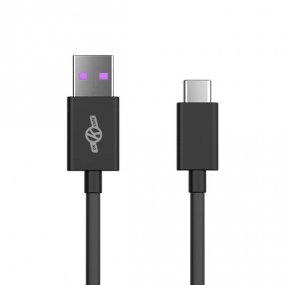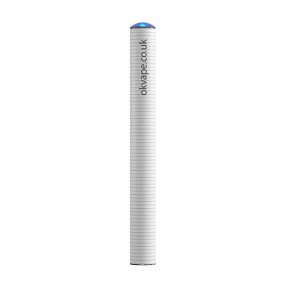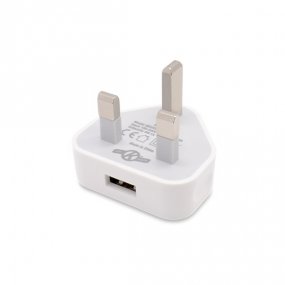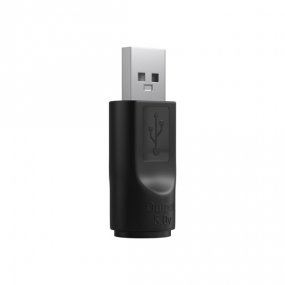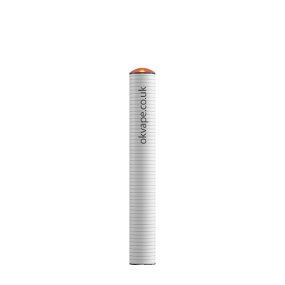Vape Battery Safety
Any type of battery can pose a risk when not handled correctly. Lithium-ion batteries are everywhere – in phones, PCs, and our vapes – and should be properly cared for to minimise risk and maximise power. Following these instructions on battery safety will ensure you get the most out of lithium-ion batteries and make your vape batteries last longer.

Battery Do's and Don'ts

Use the correct charger with a maximum output of 5V/1A
Turn off your batteries when not in use
Keep batteries out of sunlight & extreme temperatures
Clean the battery contacts regularly
Store your batteries carefully
Dispose of batteries at recycle or disposal points
Keep batteries out of reach of children

Don’t use damaged batteries
Don’t charge batteries unattended
Don’t charge your battery overnight
Don’t overcharge your batteries
Don’t remove or disable safety features
Don’t carry loose batteries in your pocket
Don’t get batteries wet
Firstly, let’s understand how batteries work
A lithium-ion battery is made up of an anode and cathode, a separator and an electrolyte; the anode and cathode store the lithium ions. The positively charged ions pass between the anode and cathode via the electrolyte through the separator. When a battery is charging, the lithium ions move from the cathode through the electrolyte to the anode, this process creates energy that the battery stores. When the battery is providing an electrical current, the opposite happens and the ions move in the opposite direction, being released from the anode to the cathode.
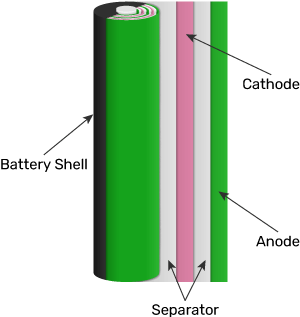

Getting the most out of your batteries
Charging your vape battery
Use the correct charger with a maximum output of 5V/1A
Always ensure you are using the correct charger. OK Vape devices have a maximum output of 5V/1A and should be used with a suitable Mains Charging Adapter.
Never charge your vape with a mobile phone, tablet, or other charger. Mobile phone chargers tend to have a higher output which can cause damage to the battery and create a fire hazard. Furniture and equipment with built-in USB charging capabilities have varying outputs – always check this before inserting your vape into a sofa, PC, integrated wall socket, or power outlet.
Don’t leave charging batteries unattended
Leaving a charging battery unattended can be dangerous; should something happen whilst the battery is charging, you should be able to respond quickly. Ensure you can see your vape when it is charging, or unplug a charging battery if you need to leave the room.
Charge your batteries on a flat surface
Always charge your vape batteries on a clean, flat surface, away from anything that could easily catch fire. Avoid carpets, sofas, pillows, and other areas where vape batteries can quickly overheat or be switched on accidentally.
Don’t overcharge your vape batteries
Although many OK Vape batteries will power off when fully charged, unplugging your device once the battery is fully charged will prevent battery damage and prolong its lifespan.
OK Vape devices use Lithium-Ion batteries, with an optimal charge range of 20%-80%. Occasionally discharge to 0% and fully recharge.
Do not microwave batteries
Vape batteries cannot be charged in the microwave. Microwaves do not emit electrical current and cannot charge any type of battery. Microwaving a vape battery is hazardous and can cause sparks, fumes, and fires.
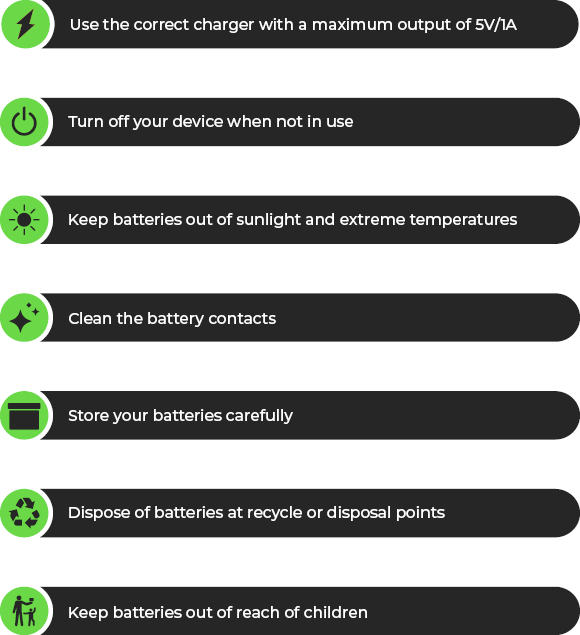

Maintaining your vape batteries
Turn off your vape device when not in use
OK Cigalike and OK Pod vape batteries are auto-draw activated and do not require an on/off switch. Vape devices with button functions should be switched off when not in use to prevent accidental activation.
Keep vape batteries dry
Dispose of vape batteries that come into contact with liquid of any kind. Water and other liquids can cause battery chemicals to react or short-circuit, and charging a battery that has been damaged by liquids can cause the battery to overheat and explode. Wet hands, condensation, damp pockets, and wet work surfaces are common ways for liquids to damage your device and its batteries. Take care to keep your device away from all sources of liquid.
Keep batteries out of sunlight & extreme temperatures
Exposing batteries to extreme temperatures can cause a chemical reaction within the battery. Batteries should be stored at room temperature, and not left in particularly hot or cold locations.
Clean the battery contacts
Over time, debris, dust and e-liquid residue can build up within your device, causing your battery to work harder to perform as it should. This can affect the performance of the battery and increase the risk of overheating. Clean the battery contacts regularly with a dry piece of tissue or cotton bud to support battery performance.
Store your batteries safely
When your batteries are not in use they should be stored in a well-ventilated environment away from children, pets, moisture, and other potential hazards. Where possible, store removable and spare batteries in a dedicated plastic organiser with individual compartments to prevent accidental contact with other batteries and metals.
Sign up to hear more from OK Vape
Safely using your vape batteries
Use the correct batteries
Not all batteries are suitable for all vapes. Only use the batteries recommended for use with your vape device. When using more than one vape battery, don’t mix different brands or charge levels. Mixing and matching batteries can result in voltage imbalances, so always stick to the same brand and replace multiple batteries at the same time.
Do not use or remove a swollen battery
Swollen batteries are hazardous and should be treated with extreme care and caution. If your vape battery appears swollen, power your device down and place it in a fireproof container. Take the device to a specialist battery repair, removal, or recycling centre without delay.
Don’t disable safety features
Many vape devices have safety features to prevent overheating and overcharging. Do not remove or disable safety features.
Keep batteries away from children
Keep vape batteries safely out of the sight and reach of children. Keep new batteries in their original packaging and keep all battery-powered devices stored away. When a battery has depleted, safely dispose of it without delay at a specialist battery recycling centre.
Don’t use an overheating vape battery
Do not use an overheating vape device that is extremely hot to the touch, has a foul smell, or is actively emitting smoke. Clear the area of anything flammable and ventilate the room. If safe to do so, move the device to a fire-resistant outdoor surface . Do not take an overheating vape battery outside when raining.
Do not open, incinerate, puncture, drop, or damage batteries
Do not alter the structure of a vape battery by opening, incinerating, puncturing, or physically damaging it. Altering the structure of a vape battery poses a serious hazard and the contents of an open battery can cause serious chemical burns.
Disposing of vape batteries

Dispose of batteries safely
Discarded electricals are one of the fastest-growing sources of waste in the world. Dispose of batteries safely and responsibly by removing the vape battery from your device and taking it to the nearest battery recycling point. Don’t dispose of vape batteries in your general waste bin.

Discontinue the use of damaged and depleted batteries
Dispose of damaged batteries that are dented, pierced, rusted, corroded, or exhibit any other signs of wear and tear. If your vape battery appears to be leaking, wear gloves and protective clothing during handling and store it in a container of sand until you can dispose of it safely at your nearest battery recycling point. Do not dispose of vape batteries in general waste bins.
Frequently Asked Questions
You should always use the charger that is supplied with your vape device or a genuine replacement. Counterfeit electrical chargers can be deadly, and many fail to meet UK safety regulations. Vape chargers with a maximum output of 5V/1A are suitable for use with OK Vape devices.
No, you should not leave your vape battery charging unattended. If something happens while the battery is charging, you should be able to respond quickly. Charge your vape batteries on a clean, flat surface away from anything that could catch fire, and unplug a charging battery if you need to leave the room.
Unplug your vape device once it’s fully charged. Overcharging can damage the battery, shorten its lifespan and present a fire risk.
If your device has an on/off switch, it is recommended to turn it off when you're not using it. This will prevent accidental activation and help to prolong the battery life. If your vape device is button-activated, avoid putting it in pockets and compartments where it could be activated without your knowledge.
A wet battery should be disposed of. Water can cause battery chemicals to react or short-circuit. Charging a battery that has been damaged by liquids can cause the battery to overheat and explode.
When your vape batteries are not in use, you should store them at room temperature in a cool, dry, well-ventilated environment away from children, pets, moisture, and other potential hazards. Where possible, use dedicated plastic battery organisers with individual compartments to prevent accidental contact with other batteries or metals.
You should dispose of your old vape batteries safely. In 2022, batteries that were incorrectly disposed of caused more than 700 fires in bin lorries and at landfill sites. Do not dispose of vape batteries in household bins. Instead, take them to a local recycling centre or hazardous waste facility where they will be correctly treated.
Lithium batteries contain chemicals such as manganese, cobalt, and nickel. These chemicals are harmful to the environment when incorrectly disposed of, starting fires in landfills and polluting the air. Always dispose of vape batteries at specialist battery recycling centres.
Lithium vape batteries can be recycled. Used batteries should be disposed of at specialist recycling centres where they will be safely dismantled and made into something new.
Modern vape devices are designed for safe charging. A vape battery bought from a reputable retailer can be safely charged both within a mod device and in an external battery charger.
A properly maintained vape battery lasts upwards of 12 months. Batteries degrade over time, gradually losing charging capacity and recharging speed; this is when you’ll know it’s time to replace your vape battery.
Although Pass-Through makes it possible for vapers to use their devices while charging, we don’t recommend using your vape device while connected to a charger. Waiting for your e-cigarette to charge completely ensures the battery is charged both safely and correctly.
Many modern e-cigarette devices feature safety functions to help prevent battery damage. These include:
- Short Circuit Protection to prevent the device from firing during a short circuit.
- Low Voltage Protection to prevent the device from firing when the battery voltage is too low.
- Overheat Protection to prevent overheating when the device is too hot.
- Overcharge Protection to prevent the battery from charging beyond a safe level.
- Automatic Cut Off to prevent the device from firing continuously for an extended period.
Only tackle a vape battery fire if you’re absolutely sure it can be extinguished. If you have any doubts, immediately alert emergency services and evacuate the building.
If it’s safe to do so, use a Aqueous Vermiculite Dispersion (AVD) which is designed to coat battery cells and prevent more oxygen from reaching the source of the ignition. Next, use a water-based extinguisher to extinguish spreading flames and prevent the spread of fire until help arrives.
There are various types of 18650 batteries, so it's important to check that your device supports the type of battery you want to use. Use the correct battery for the device, and only charge your device using a charging cable with the appropriate power output.
With the correct charger and the appropriate output for your device, it is safe to charge vape batteries in the car. OK Vape devices can be charged with car adapters and charging cables that output a maximum of 5V/1A. Do not use fast-charge mobile phone ports or built-in car USB slots with outputs over 5V/1A.
Overcharge protection is a feature that can prevent a battery from being over charged. Overcharge protection usually works by cutting off the current to the charging circuit. However, we recommend that for safety reasons you stick to basic battery safety guidelines and only use the recommended charger and cable with the recommended output just to be safe.
You should always use the charger that is supplied with your vape device or a genuine replacement. Counterfeit electrical chargers can be deadly, and many fail to meet UK safety regulations. Vape chargers with a maximum output of 5V/1A are suitable for use with OK Vape devices.
No, you should not leave your vape battery charging unattended. If something happens while the battery is charging, you should be able to respond quickly. Charge your vape batteries on a clean, flat surface away from anything that could catch fire, and unplug a charging battery if you need to leave the room.
Unplug your vape device once it’s fully charged. Overcharging can damage the battery, shorten its lifespan and present a fire risk.
If your device has an on/off switch, it is recommended to turn it off when you're not using it. This will prevent accidental activation and help to prolong the battery life. If your vape device is button-activated, avoid putting it in pockets and compartments where it could be activated without your knowledge.
A wet battery should be disposed of. Water can cause battery chemicals to react or short-circuit. Charging a battery that has been damaged by liquids can cause the battery to overheat and explode.
When your vape batteries are not in use, you should store them at room temperature in a cool, dry, well-ventilated environment away from children, pets, moisture, and other potential hazards. Where possible, use dedicated plastic battery organisers with individual compartments to prevent accidental contact with other batteries or metals.
You should dispose of your old vape batteries safely. In 2022, batteries that were incorrectly disposed of caused more than 700 fires in bin lorries and at landfill sites. Do not dispose of vape batteries in household bins. Instead, take them to a local recycling centre or hazardous waste facility where they will be correctly treated.
Lithium batteries contain chemicals such as manganese, cobalt, and nickel. These chemicals are harmful to the environment when incorrectly disposed of, starting fires in landfills and polluting the air. Always dispose of vape batteries at specialist battery recycling centres.
Lithium vape batteries can be recycled. Used batteries should be disposed of at specialist recycling centres where they will be safely dismantled and made into something new.
Modern vape devices are designed for safe charging. A vape battery bought from a reputable retailer can be safely charged both within a mod device and in an external battery charger.
A properly maintained vape battery lasts upwards of 12 months. Batteries degrade over time, gradually losing charging capacity and recharging speed; this is when you’ll know it’s time to replace your vape battery.
Although Pass-Through makes it possible for vapers to use their devices while charging, we don’t recommend using your vape device while connected to a charger. Waiting for your e-cigarette to charge completely ensures the battery is charged both safely and correctly.
Many modern e-cigarette devices feature safety functions to help prevent battery damage. These include:
- Short Circuit Protection to prevent the device from firing during a short circuit.
- Low Voltage Protection to prevent the device from firing when the battery voltage is too low.
- Overheat Protection to prevent overheating when the device is too hot.
- Overcharge Protection to prevent the battery from charging beyond a safe level.
- Automatic Cut Off to prevent the device from firing continuously for an extended period.
Only tackle a vape battery fire if you’re absolutely sure it can be extinguished. If you have any doubts, immediately alert emergency services and evacuate the building.
If it’s safe to do so, use a Aqueous Vermiculite Dispersion (AVD) which is designed to coat battery cells and prevent more oxygen from reaching the source of the ignition. Next, use a water-based extinguisher to extinguish spreading flames and prevent the spread of fire until help arrives.
There are various types of 18650 batteries, so it's important to check that your device supports the type of battery you want to use. Use the correct battery for the device, and only charge your device using a charging cable with the appropriate power output.
With the correct charger and the appropriate output for your device, it is safe to charge vape batteries in the car. OK Vape devices can be charged with car adapters and charging cables that output a maximum of 5V/1A. Do not use fast-charge mobile phone ports or built-in car USB slots with outputs over 5V/1A.
Overcharge protection is a feature that can prevent a battery from being over charged. Overcharge protection usually works by cutting off the current to the charging circuit. However, we recommend that for safety reasons you stick to basic battery safety guidelines and only use the recommended charger and cable with the recommended output just to be safe.
We have provided contextual links within the article above where you can visit the source of our research.
